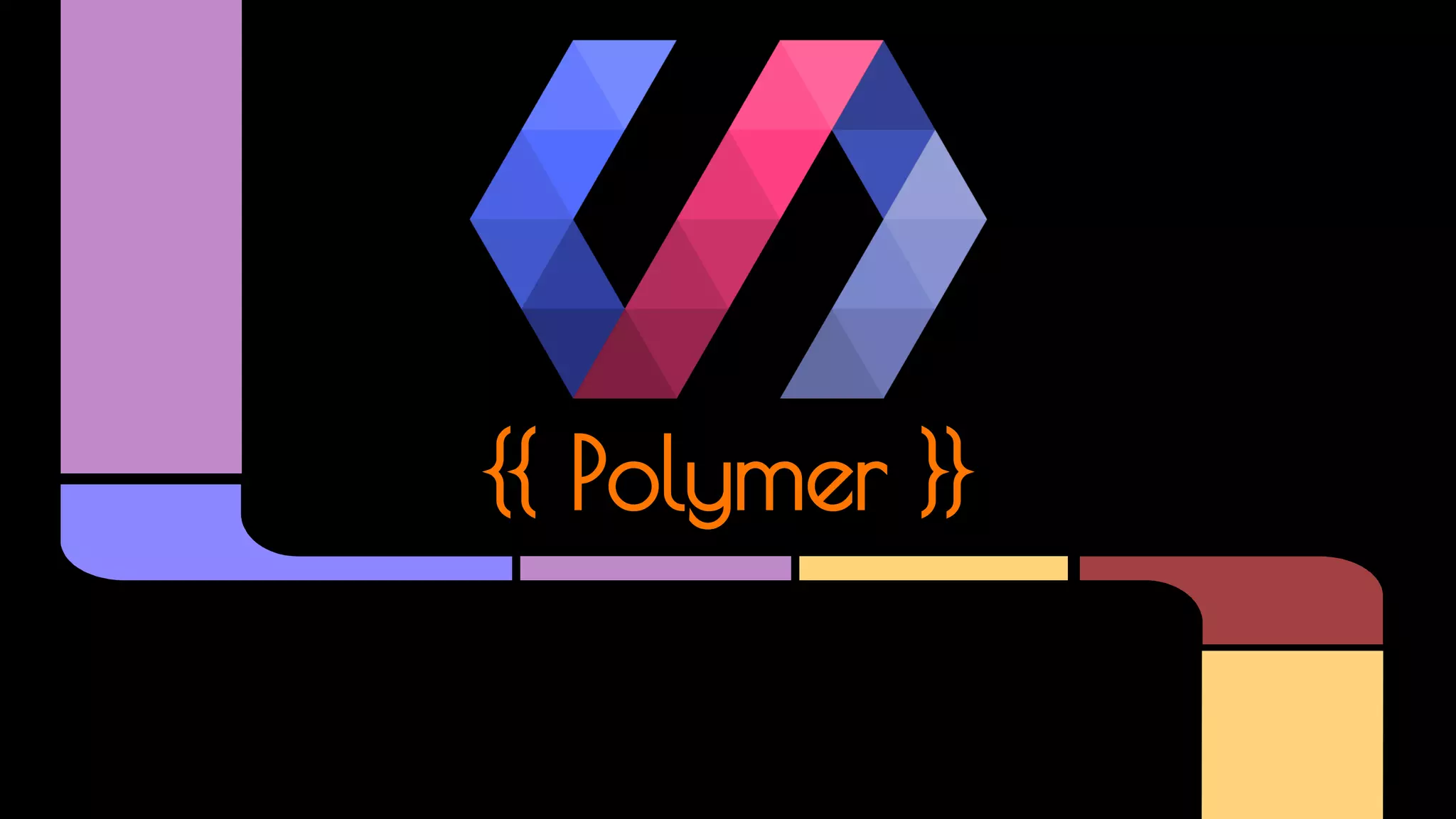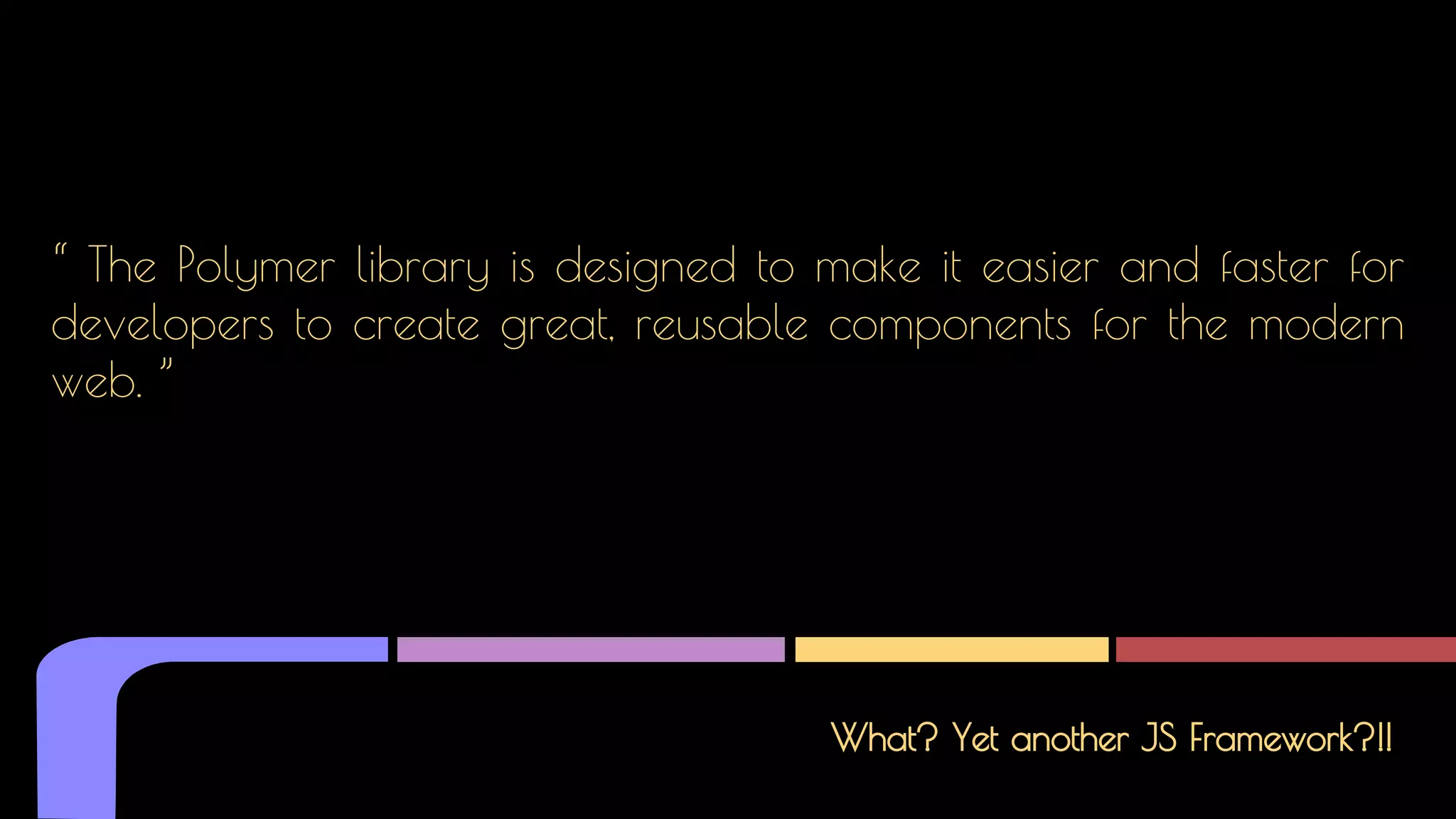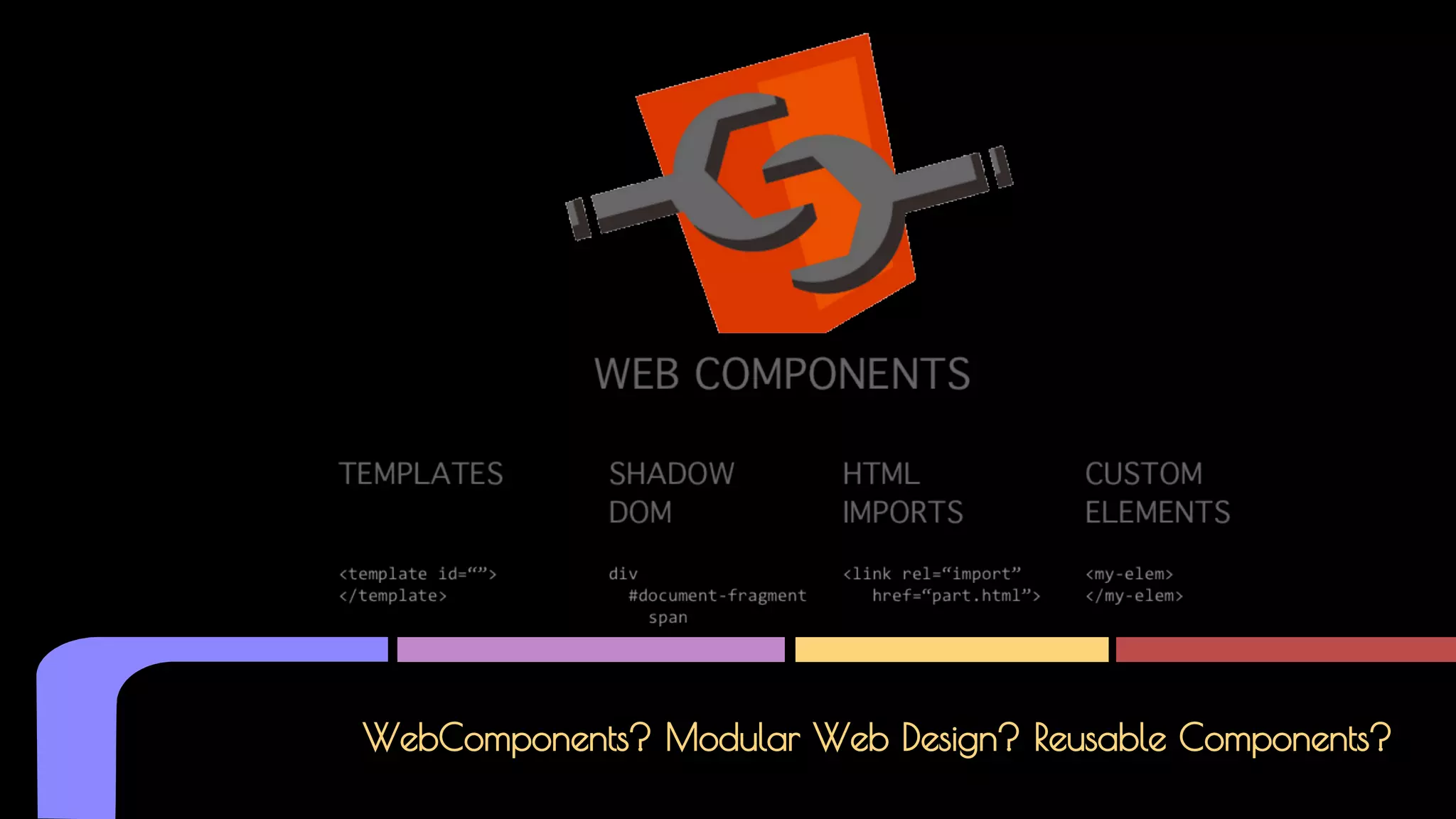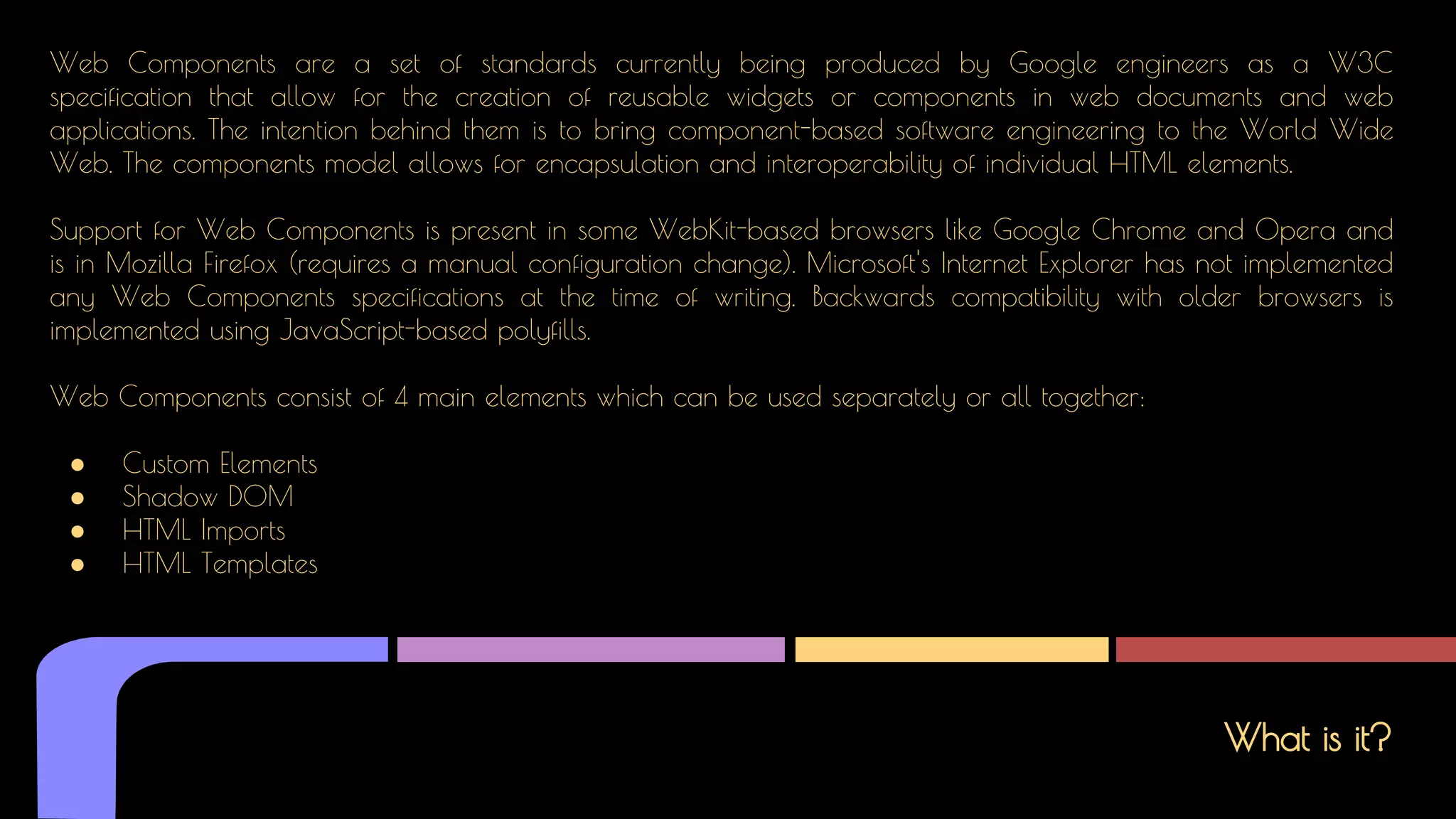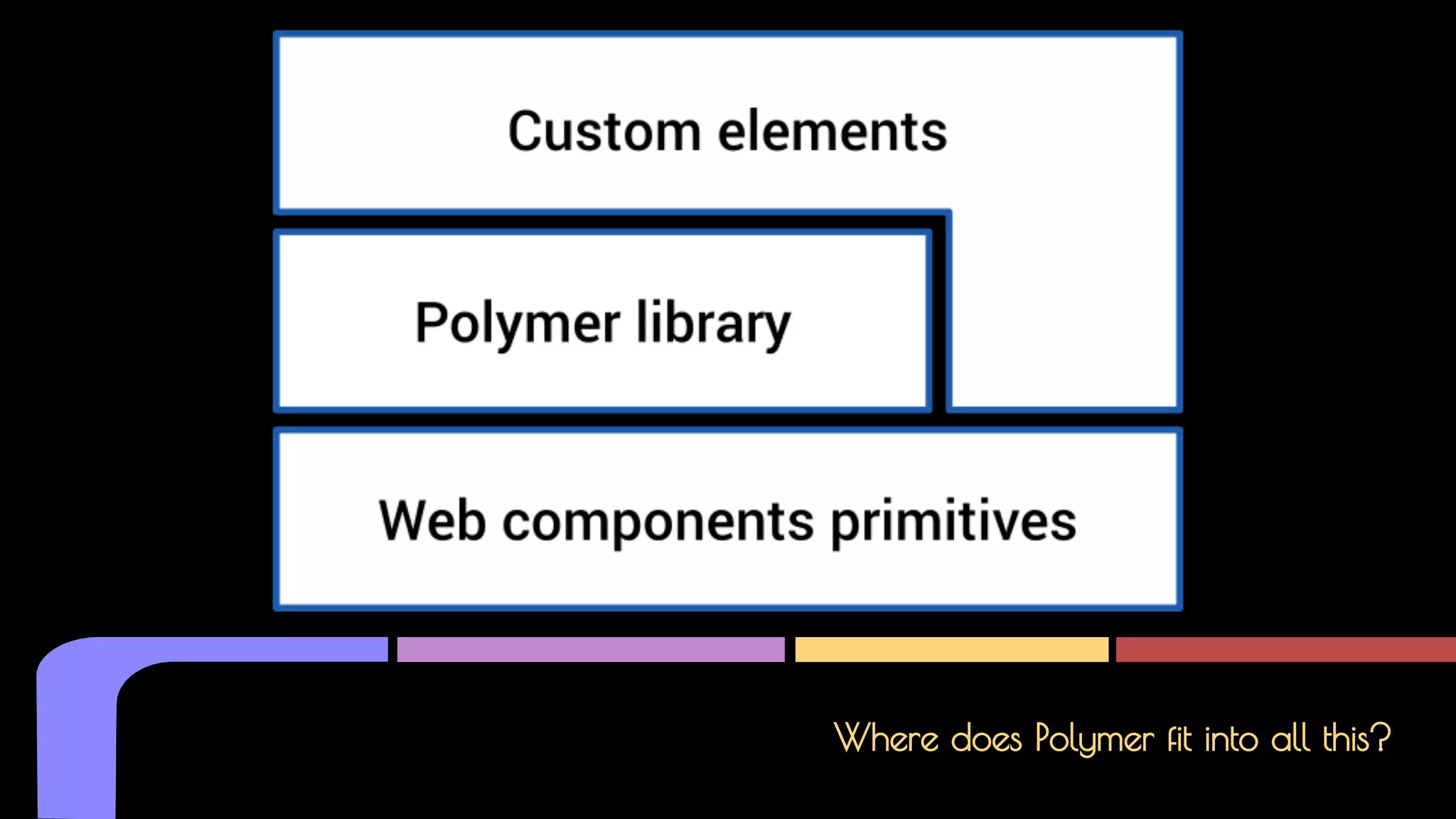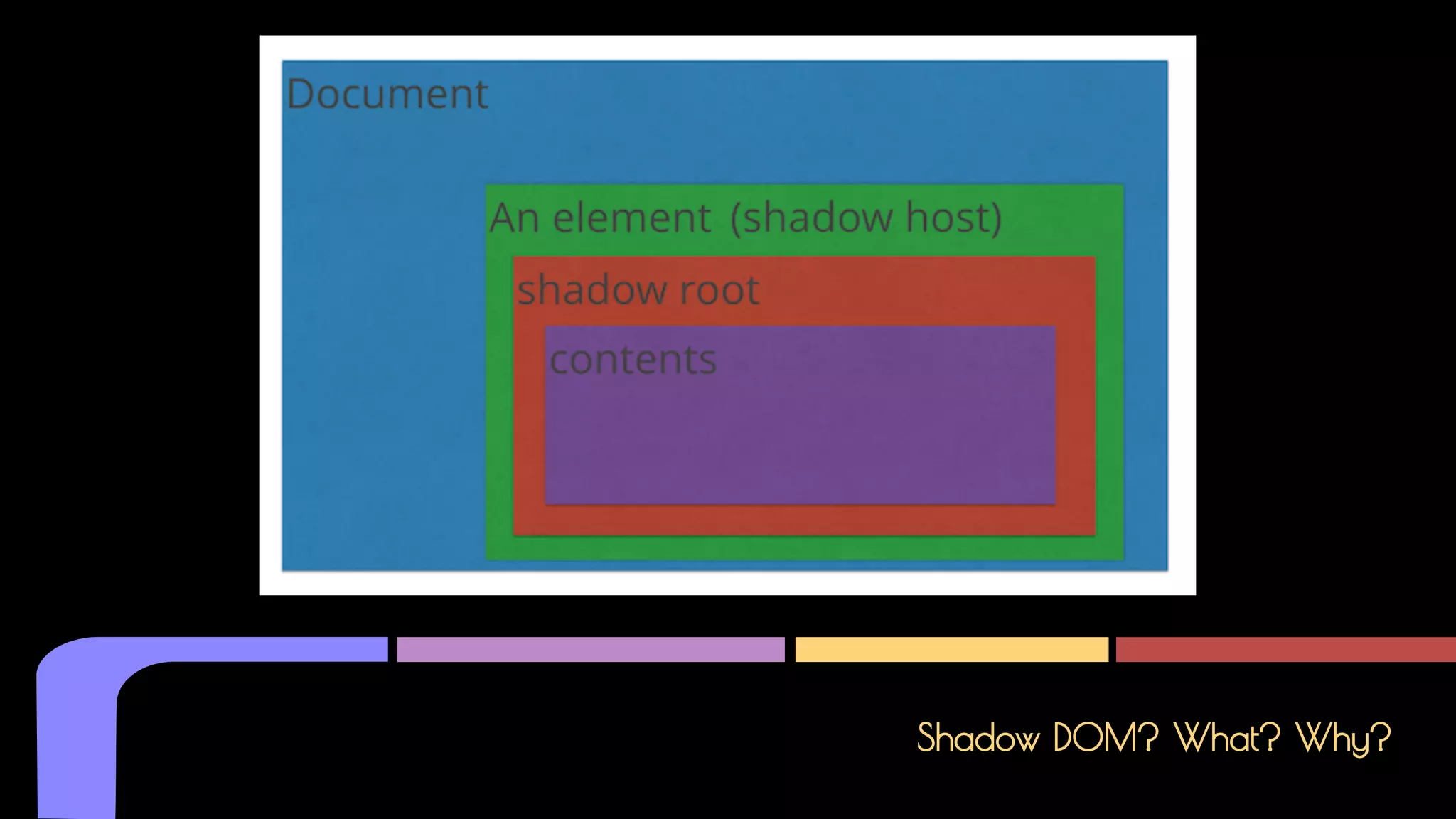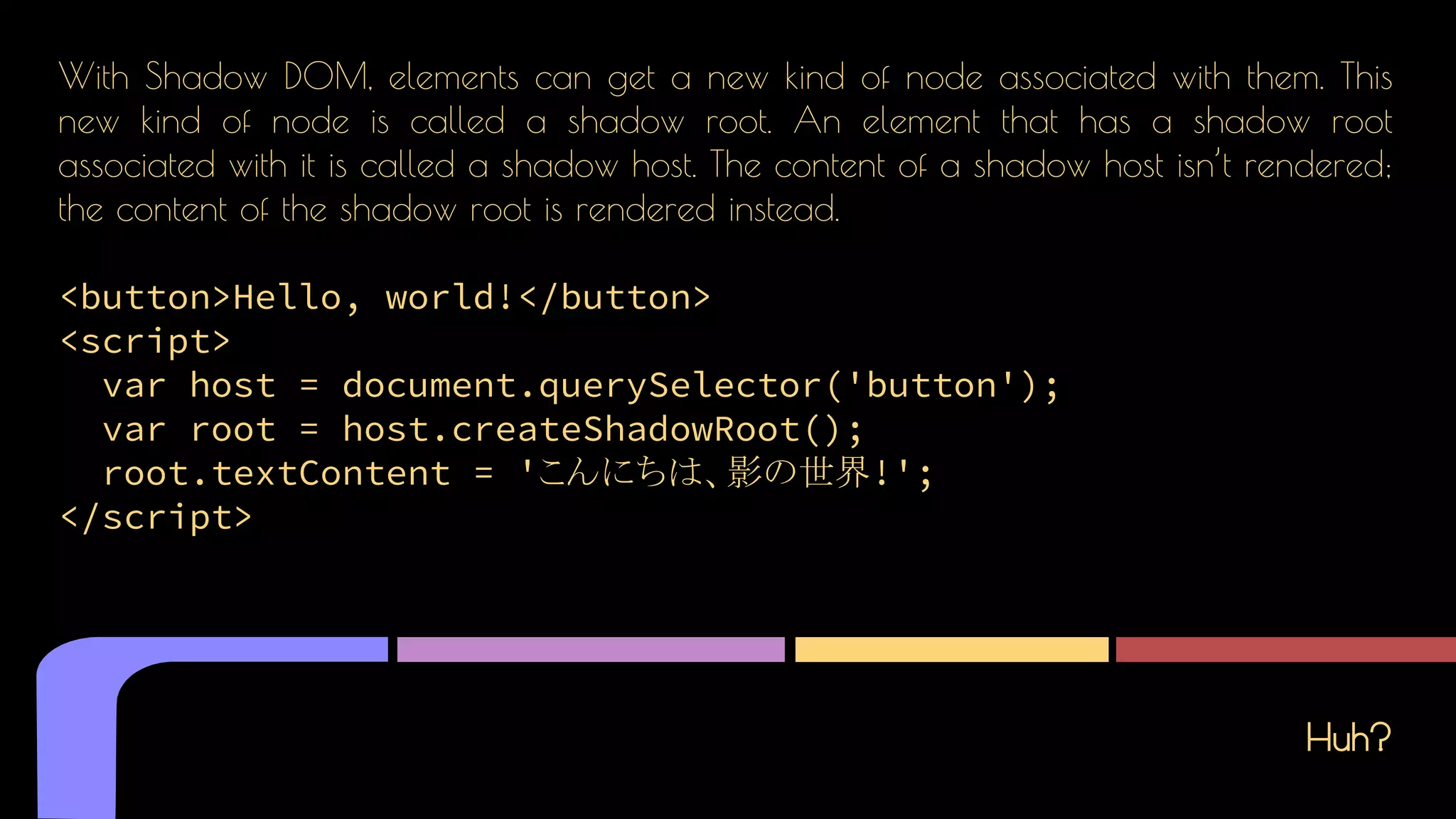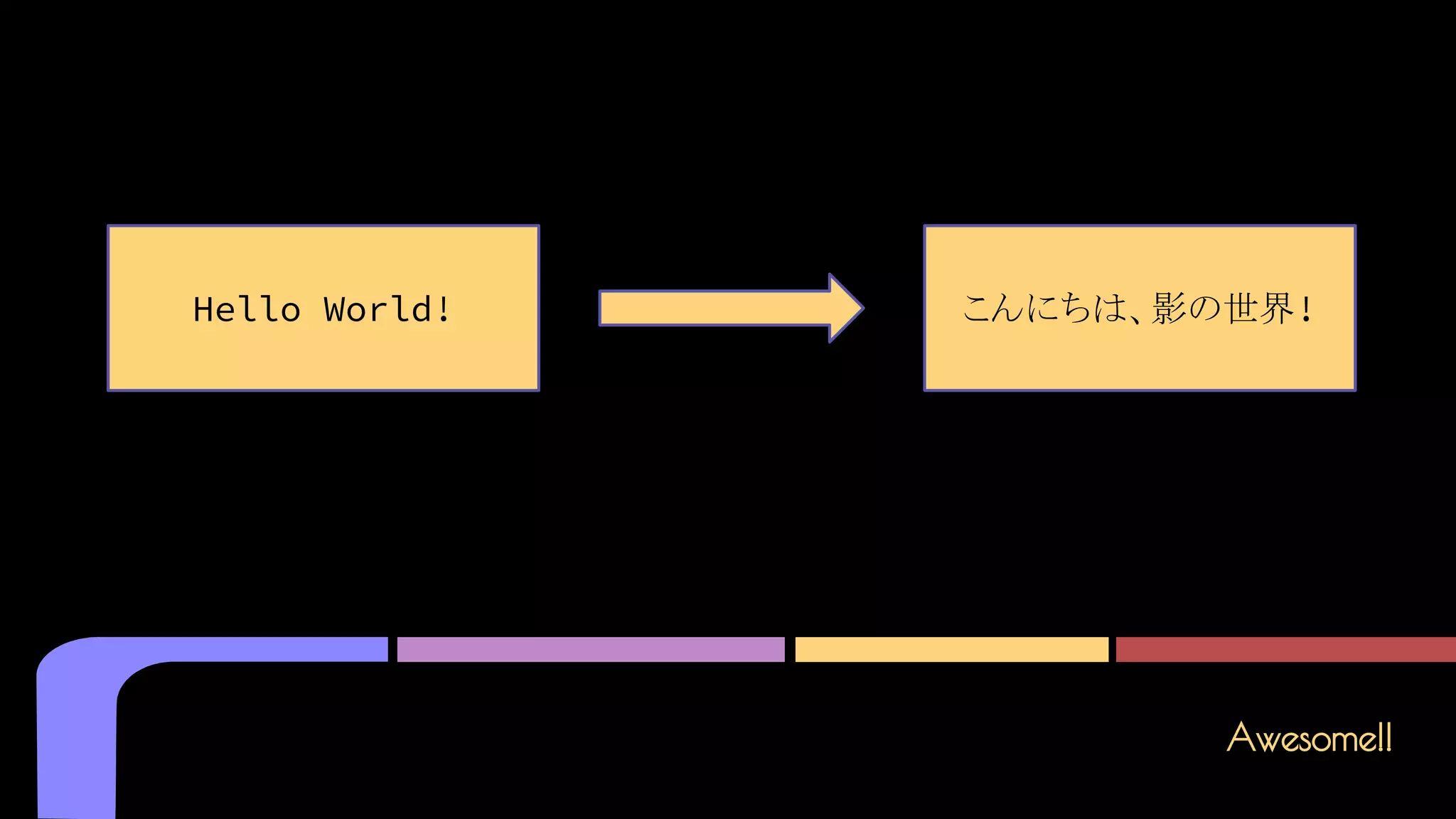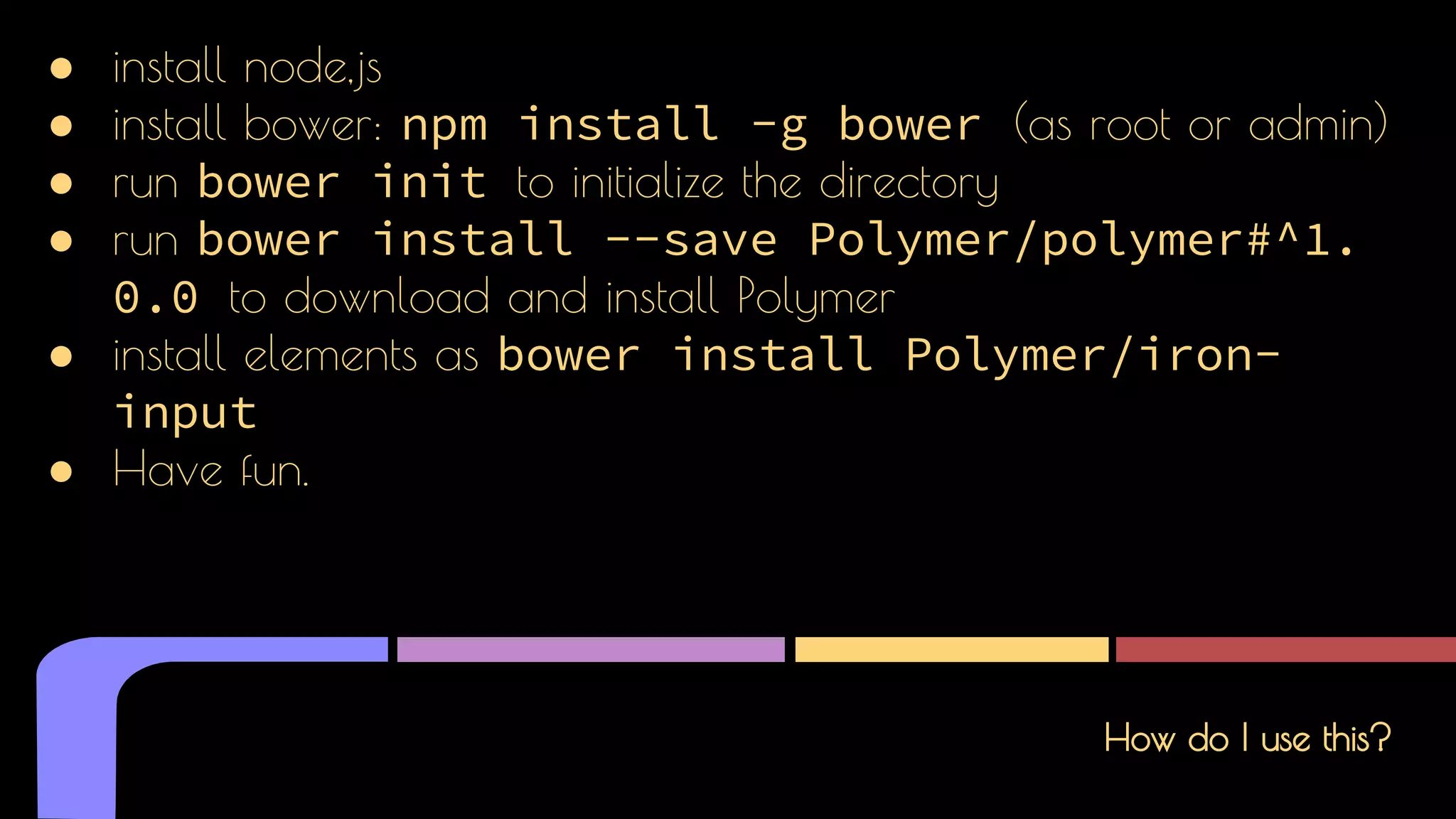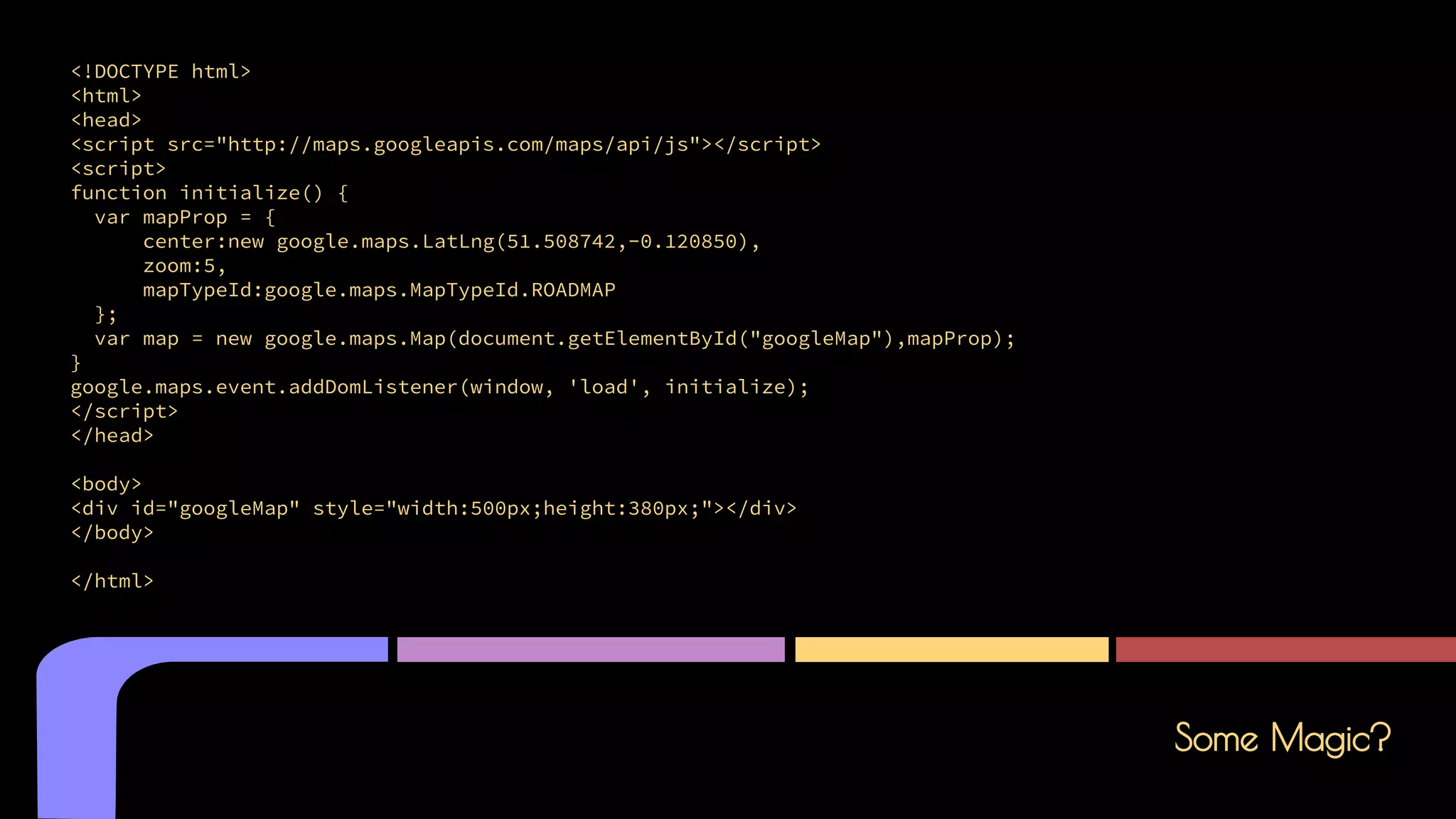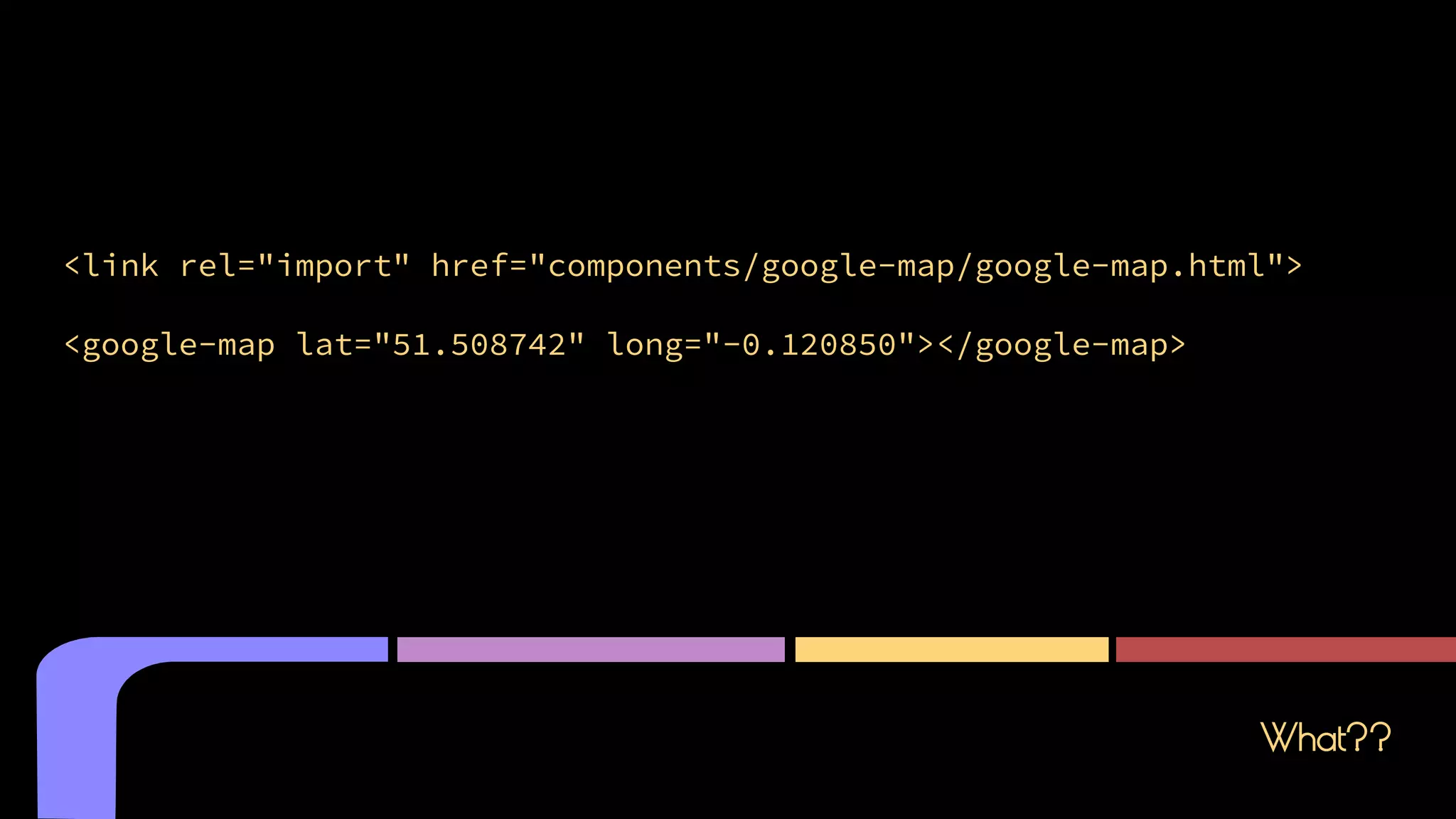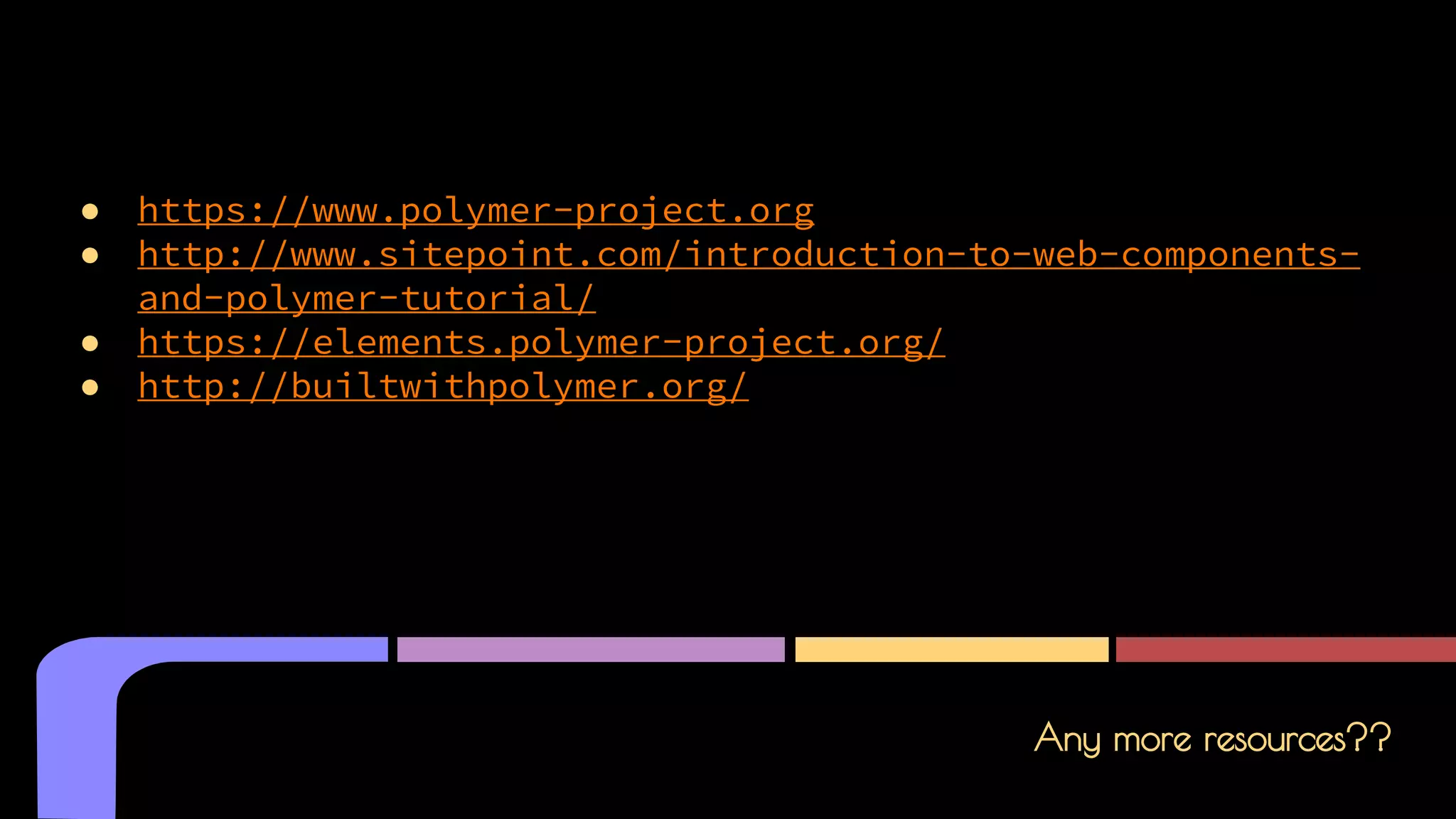Polymer is a library that makes it easier to create reusable web components using Web Component standards like custom elements, shadow DOM, HTML imports, and templates. It fits into the web components model by providing polyfills for backwards compatibility and tools to define, register, and use custom elements. The Polymer library encapsulates components and their styling using shadow DOM to make them reusable across projects. Developers can install Polymer using Bower and build web applications with reusable custom elements that encapsulate functionality like maps, forms, or other UI components.
